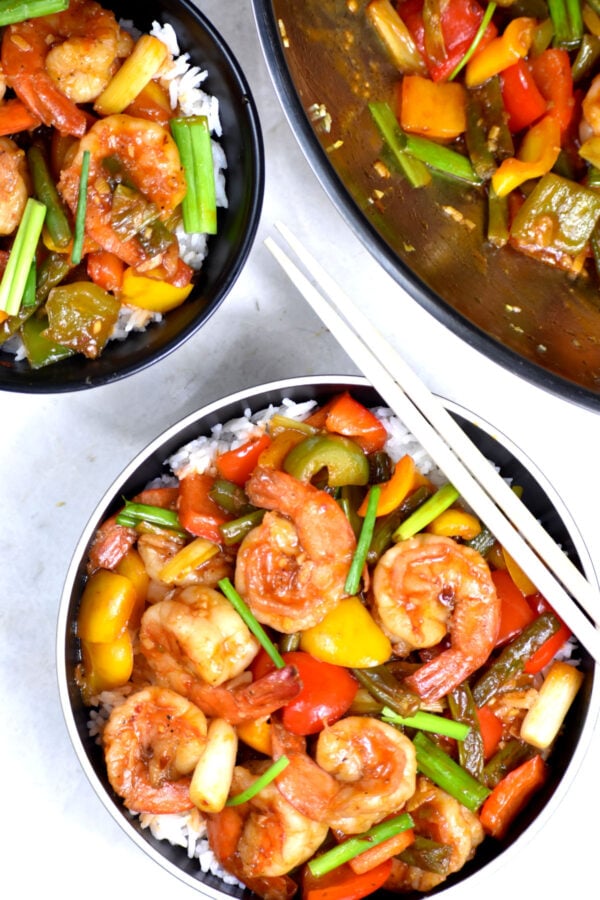Along with Bulgogi Sauce and General Tso Sauce, it’s one of our go-to Asian sauces.
Ingredient Notes and Substitutions
Soy Sauce – This is a key ingredient for the umami flavor. If you need a gluten-free option, tamari is a great substitute. For a lower sodium version, use light soy sauce. Shaoxing Wine – This traditional Chinese cooking wine adds depth and complexity. If you don’t have it, dry sherry is a good alternative. Rice Vinegar – It brings a mild acidity to the sauce. If you don’t have rice vinegar, apple cider vinegar or white wine vinegar can work as substitutes, though they are a bit stronger in flavor. Dark Soy Sauce – Darker and slightly sweeter than regular soy sauce, it also adds color to the dish. If unavailable, you can use a bit more regular soy sauce with a teaspoon of molasses or brown sugar to mimic its richness and color. Chili Oil – This is a chili pepper infused oil. You can generally find it in the international section of many supermarkets, or follow our easy Chili Oil Recipe. White Sugar – It balances the flavors. If you prefer, honey or brown sugar can be used instead. Corn Starch – This helps to thicken the sauce. Arrowroot powder is a good alternative if you’re looking for a corn-free option.
How to Make Hunan Sauce
Whisk all of the ingredients together in a bowl. Now you’re all ready to make some stir fry!
How to Use this Spicy Sauce
Use it in any of your favorite Stir Fry Recipes or Asian Noodle Recipes. Simply swap the regular sauce for Hunan sauce. We have great recipes for Hunan Shrimp and Hunan Beef, be sure to check them out. You can also use it as a dipping sauce for spring rolls, dumplings or sushi. How about Hunan chicken wings? Sounds like a hit!
What’s the Difference Between Hunan Sauce and Szechuan Sauce?
Hunan sauce and Szechuan sauce, both originating from distinct regions in China, offer unique flavor experiences in Chinese cuisine. Both are known for their spiciness. Hunan sauce, coming from Hunan Province, is recognized for its bold and straightforward spiciness. This sauce primarily utilizes chili peppers, contributing to its sharper, more pronounced heat. In contrast, Szechuan sauce, from Sichuan Province, is known for its complex and multi-layered flavor profile. It combines the spiciness of chili with the unique numbing sensation of Sichuan peppercorns, a signature element of Sichuan cuisine. While both give a good kick, Hunan is generally the spicier of the two. Give your stir fry a spicy upgrade with this hot and fiery Hunan sauce. It never hurts to give your taste buds a little tingle! Pin or bookmark this easy recipe so you always know where to find it. And be sure to subscribe to GypsyPlate, we’re always cooking up new recipes for you. While you’re here, be sure to check out our collection of favorite Chinese Recipes to keep those great flavors going! More Can’t-Miss Sauce Recipes:Teriyaki SauceAji VerdeChipotle MayoJamaican Jerk SauceBuffalo SauceDumpling SaucePeri Peri Sauce






